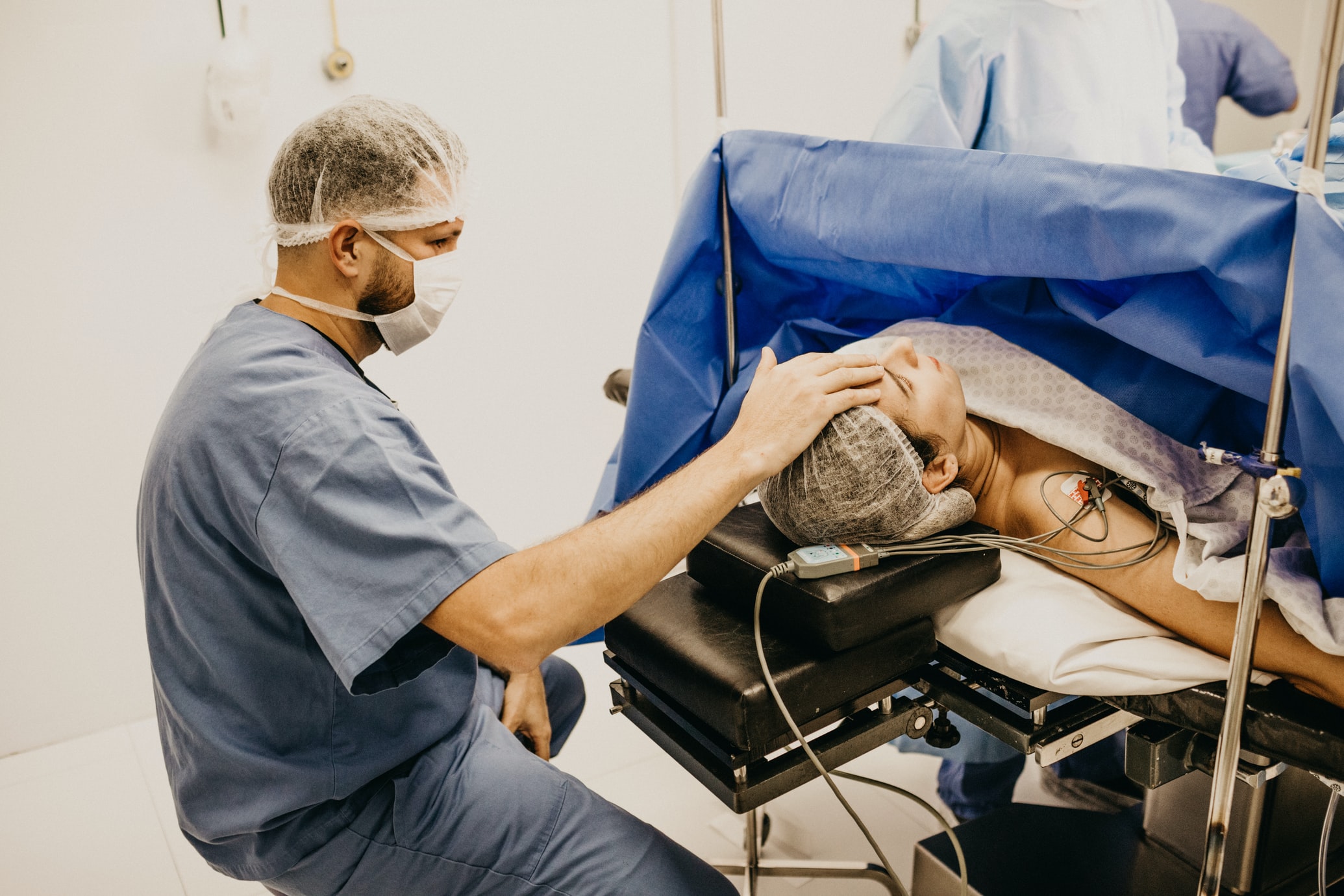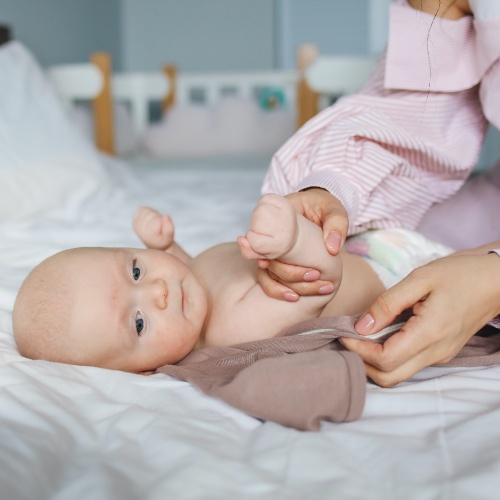What is a Caesarean section and How to Prepare

A caesarean section (often called a C-section for short) is a surgical procedure that sometimes is used to deliver a baby. The surgical procedure consists of making incisions in the abdomen and uterus through which the baby is delivered. There can be several reasons why a pregnant woman needs a C-section and can’t deliver her baby through vaginal birth. If you’re pregnant, it might be comforting to gain a little more knowledge about C-sections to feel more prepared. Therefore, we have created this article for you in which we will explain why a C-section is sometimes necessary, how to prepare for a C-section and what to think about after such a procedure is done.
What is a C-section and when is it necessary?
As previously mentioned, a C-section is a surgical procedure in which incisions are made in the abdomen and uterus of the pregnant woman to deliver her baby. In some cases, a C-section might be planned before the delivery if the mother herself doesn’t want a vaginal birth or if complications have developed during the pregnancy. However, in other cases, the need for a C-section doesn’t become obvious until the actual time of labour.
A C-section is done when it is considered safer for you or your baby than a vaginal delivery. The reasons for it being considered safer can be many, and below we have listed some common reasons why a C-section might be necessary:
- Non–progressing labour: One of the most common reasons for a C-section is stalled labour. This might occur if your cervix isn’t opening enough even though you have strong and frequent contractions.
- Your baby is in an abnormal position: A C-section might be safer than a vaginal birth if your baby’s feet or bottom enter the birth canal first, which is referred to as the baby being breech. If the baby is transverse, meaning that the baby’s side or shoulder enter the birth canal first, a C-section is usually also the safest delivery option.
- Your baby is in distress: If there are concerning changes in your baby’s heartbeat, a C-section might be the safest delivery option.
- Birth defects: If your baby has been diagnosed with certain birth defects, your doctor might choose to deliver your baby through a C-section to reduce complications.
- You are pregnant with multiples: Carrying multiple babies can lead to prolonged labour or to one or more of the babies being in an abnormal position. In these cases, a C-section is often the safest delivery option.
- Problems with the placenta: If the placenta covers the cervix (placenta previa) or if the placenta separates from the uterine lining which causes the baby to lose oxygen (placenta abruption), a C-section is the recommended delivery option.
- Chronic health conditions in the mom: If you have certain chronic health conditions, vaginal delivery might be dangerous for you and a C-section can be recommended instead. This includes conditions like heart disease, high blood pressure or some brain conditions. If you have HIV or genital herpes, a C-section will also be recommended to avoid transferring the infection to the baby through vaginal delivery.
- You’ve had a previous C-section: Women who have previously had a C-section can usually deliver vaginally for their next birth. This is what is called a VBAC (vaginal birth after caesarean). However, this depends on the circumstances surrounding the prior C-section and you can discuss the safest delivery option with your health care provider.
How to prepare for a C-section
If your C-section is planned before the delivery of your baby, there are some things you can do and think about to be well prepared. Read about these things below!
- Ask about your C-section and still your mind
First of all, take the chance to ask your health care provider about any questions or concerns you might have about the C-section. This way, you can feel most prepared before the procedure.
- Shower using antiseptic soap
To reduce the bacteria on your body and on the skin incision area, you can shower with antiseptic soap both the night before and the morning of your C-section. This reduces your risk of infection during and after the procedure.
- Do not shave before the procedure
It is recommended to not shave your pubic hair or the hair around the incision site within 24 hours of your C-section since shaving can increase the risk of an infection on the surgical site. If shaving is necessary, this will be done by the surgical staff.
- Stay warm
If you are cold before or during the procedure, your likelihood of getting an infection can increase. Both while waiting for your surgery and during your surgery, ask for warm blankets to stay as warm as possible.
- A bonus tip!
One extra tip that we would like to give you on how to best prepare for a C-section is one that most would probably not think of. This is to ask your surgical staff to put the blood pressure cuff, IV, pulse oximeter and any additional equipment all on one arm. That way you will have one hand free to welcome your baby once he or she is born.
What to think about after a C-section
After your C-section is done and you’ve had the chance to welcome your baby into this world, there are some things that are important to think about to boost your recovery.
- Minimize catheter use: During your C-section, a catheter will likely be placed into your bladder to collect urine and it will be left there after your surgery. However, as soon as you feel ready to have the catheter removed and use a bedpan or go to the bathroom, do so! This reduces infection risk from the catheter, and it will also get you up and walking faster.
- Walk and move around: As soon as you feel strong enough to get up and walk around with assistance, you should do so to optimize your healing. Walking around will also decrease your risk of developing blood clots.
- Soothe any pain: Soreness and pain around the incision are common. To relieve this your health care provider might recommend a heating pad or painkillers like Advil, Motrin or Tylenol.
- Take care of your incision wound: Follow your health care provider’s instructions on how to care for your incision and watch for signs of infection such as redness, swelling, bleeding or worsening pain.
- Take it easy: This includes resting whenever possible, avoiding lifting from a squatting position, and avoiding lifting anything heavier than your baby. Furthermore, it is recommended to not drive until you can twist and turn without being on pain medication, which might take a few weeks. Taking it easy also involves avoiding sex for six weeks after your C-section to prevent infection.


